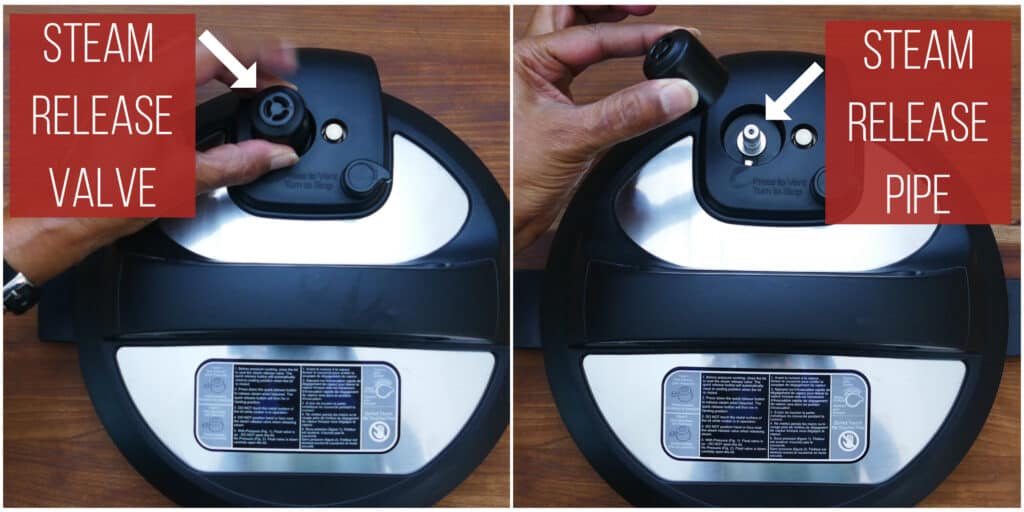Instant Pot Natural Pressure Release vs. Quick Release -What does it mean when an Instant Pot recipe calls for ” Natural Pressure Release” and/or “Quick Release”? and how do you know which method to use?
One of the first things you’ll want to understand when cooking in the Instant Pot is how to release the steam that’s formed in the pot while you’ve been pressure cooking. How you release the steam will depend on what you are cooking.
Heres a visual for the terms ( “pressure release valve”, “steam release valve” and” float valve”) we will be talking about.
**Please Note- I have the Instant Pot Ultra model and the photo above is of my Ultra- depending on what model you own, the configuration may be slightly different. In some models the steam release valve and the quick release handle are combined.
This allows you to cook food faster. After every cooking cycle, and before you can safely open the Instant Pot, the pressure must be released from the pot — no matter what kind of release you use. Instant Pots automatically regulate the pressure for you, with a release valve in the lid to allow steam to escape.

What is a Natural Pressure Release (also called Natural Release) ?
(sometimes shortened to NPR or NR in recipe directions)
This is where you just let the Instant Pot ”be”, you don’t need to do anything. The Instant Pot will begin to cool down and release pressure all on its own. Upon the completion of the cooking cycle you will hear the Instant Pot “beep” to signal it has completed the cooking cycle and it will automatically begin the Natural Pressure Release process.
You will know the Natural Pressure Release process is complete when you see/hear the float valve (metal pin) drop down. Depending on what you are cooking this could be as short as a couple of minutes or up to 30 minutes. Generally the shorter the cooking time the shorter the Natural Release time.
When to use Natural Pressure Release
A Natural Pressure Release means pressure within the Instant Pot is released in a very gradual manner (as opposed a Quick Release which forces the steam out quickly) so it’s perfect for foods that are primarily liquid (like soups) or “foamy” foods (those high in starch content that tend to foam when cooking like oatmeal, potatoes or beans). Releasing pressure slowly means the food stays in the Instant Pot and just the steam is sent out of the Steam Release Valve. Releasing the pressure too quickly when cooking liquids or “foamy” foods would result in the food and steam being sent through the steam release vent which = big giant mess in your kitchen!
While the Instant Pot is Naturally Releasing Pressure it is still cooking which also makes doing a Natural Release a great option for foods like roasts. Think of it like letting a larger cut of meat “rest” after cooking.
Ways to Release Pressure in an Instant Pot
There are two specific ways to release pressure
- Natural Pressure Release
- Quick Pressure Release
You will use one or a combination of both methods to safely release the pressure/steam in your Instant Pot.
Instant Pot Natural Pressure Release and Quick Release Explained–Instant Pot Tips
FAQ
Will my Instant Pot release pressure on its own?
Does natural release happen automatically?
How long does it take for an Instant Pot to naturally release?
